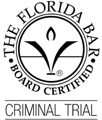AI-generated imagery is rapidly evolving into an easily accessible resource for creative individuals to express their unique ideas. However, AI’s capacity to produce virtually any image means it will execute the instructions any user directs, regardless of the legal boundaries. As AI technology advances, it becomes increasingly capable of creating highly realistic images, including those of a sexual nature. As a result, someone who uses AI to create new images may ultimately be in possession of images that violate the law, specifically those prohibiting child pornography.
Stechschulte Nell, Attorneys at Law in Tampa are committed to informing the community about how the law may apply to certain activities, even without your knowledge. Whether AI-generated imagery can lead to pornography charges depends on several factors, including the content of the images, the jurisdiction’s laws, and the intended use of the images.
However, the extremely harsh penalties imposed in child pornography prosecutions require everyone to be acutely aware of the risks involved in creating a certain type of AI imagery.
AI Imagery and Pornography – Legal Issues
Federal law prohibits a person from distributing, importing into the U.S., mailing, or possessing with intent to sell “any obscene, lewd, lascivious, or filthy book, pamphlet, picture, motion-picture film, paper, letter, writing, print, or other matter of indecent character,” (18 U.S.C. §1460 et seq). Under the applicable statute, the penalty can include a fine and up to 5 years in federal prison.
However, modern prosecutions are usually limited to violations of the laws prohibiting child pornography. Under 18 United States Code §2256, child pornography includes any visual depiction of sexually explicit conduct involving a minor.
Significantly, under the federal child pornography statute, it does not matter whether an image depicts a real human being or is a computer or AI-generated image that appears indistinguishable from an actual minor.
A significant legal risk involves the creation and distribution of AI-generated images depicting minors in sexual contexts. Laws in the United States criminalize the creation, distribution, possession, and viewing of child pornography, regardless of whether the images are of real children or digitally created to appear as minors.
AI-generated images are subject to prosecution if they include child sexual abuse material (CSAM). However, in the U.S. Supreme Court case of Ashcroft v. Free Speech Coalition, 535 U.S. 234 (2002), the Court ruled that criminal law may not be violated if an actual child is not involved in the generation of the image. Since that time, Congress has enacted legislation to reform the statute to ensure that images depicting child sexual activity are prosecutable if the image is “indistinguishable” from an actual child’s image.
Federal Penalties for Child Pornography
Federal child pornography laws carry extremely stiff penalties.
- Knowingly possessing or accessing CSAM with intent to view – Up to 10 years in prison.
- Doing so with an image of a prepubescent child or one under age 12, – Up to 20 years.
- Distributing or receiving child pornography – 5 to 20 years in federal prison.
- Second offense up to 40 years.
- Producing Child Pornography – From 15 to 30 years in federal prison, per count.
Florida Criminal Statute on AI-Generated Pornographic Images
Florida has also enacted extremely strict criminal laws against the possession, distribution, or production of child pornography.
The Florida definition of child pornography is found in FS §827.071:
- Any image depicting a minor engaged in sexual conduct; or
- Any image that has been created, altered, adapted, or modified by electronic, mechanical, or other means, to portray an identifiable minor engaged in sexual conduct.
The penalty for producing or promoting the performance of child sexual abuse in Florida is a fine of up to $10,000 and up to 15 years in state prison.
The penalty for possessing CSAM with the intent to promote any photograph, motion picture, exhibition, show, representation, or other presentation which, in whole or in part, includes child pornography is also a fine of $10,000 and up to 15 years in prison. The possession of 3 or more such images is prima facie proof of intent to promote.
Finally, any person convicted of possessing, controlling, or intentionally viewing a photograph, motion picture, exhibition, show, representation, image, data, computer depiction, or other presentation which, in whole or in part, he or she knows to include child pornography faces a penalty of $5,000 and up to 5 years in prison for each count. If more than one child is depicted in the image, then each child’s image constitutes a separate count.
Get Experienced Legal Advice from Experienced AI Pornography Defense Lawyers
With the advancement of AI technology continuing at breakneck speed, new laws may be needed to cover the creation of certain types of images depicting sexual material on both the state and federal levels. At present, AI is relatively unregulated in the United States.
One of the most challenging aspects of AI-generated pornography is the development and employment of new investigative techniques by police and other law enforcement agencies. Will new AI-assisted monitoring technology be used by law enforcement to detect, identify, and prosecute defendants?
Only experienced criminal defense lawyers with decades of courtroom practice will know how best to protect the privacy rights of individuals who are under investigation and to secure their protection against unlawful police searches and seizures.
For the most current legal information relating to AI’s application to child pornography law, contact Stechschulte Nell, Attorneys at Law in Tampa, Orlando, or Miami.









